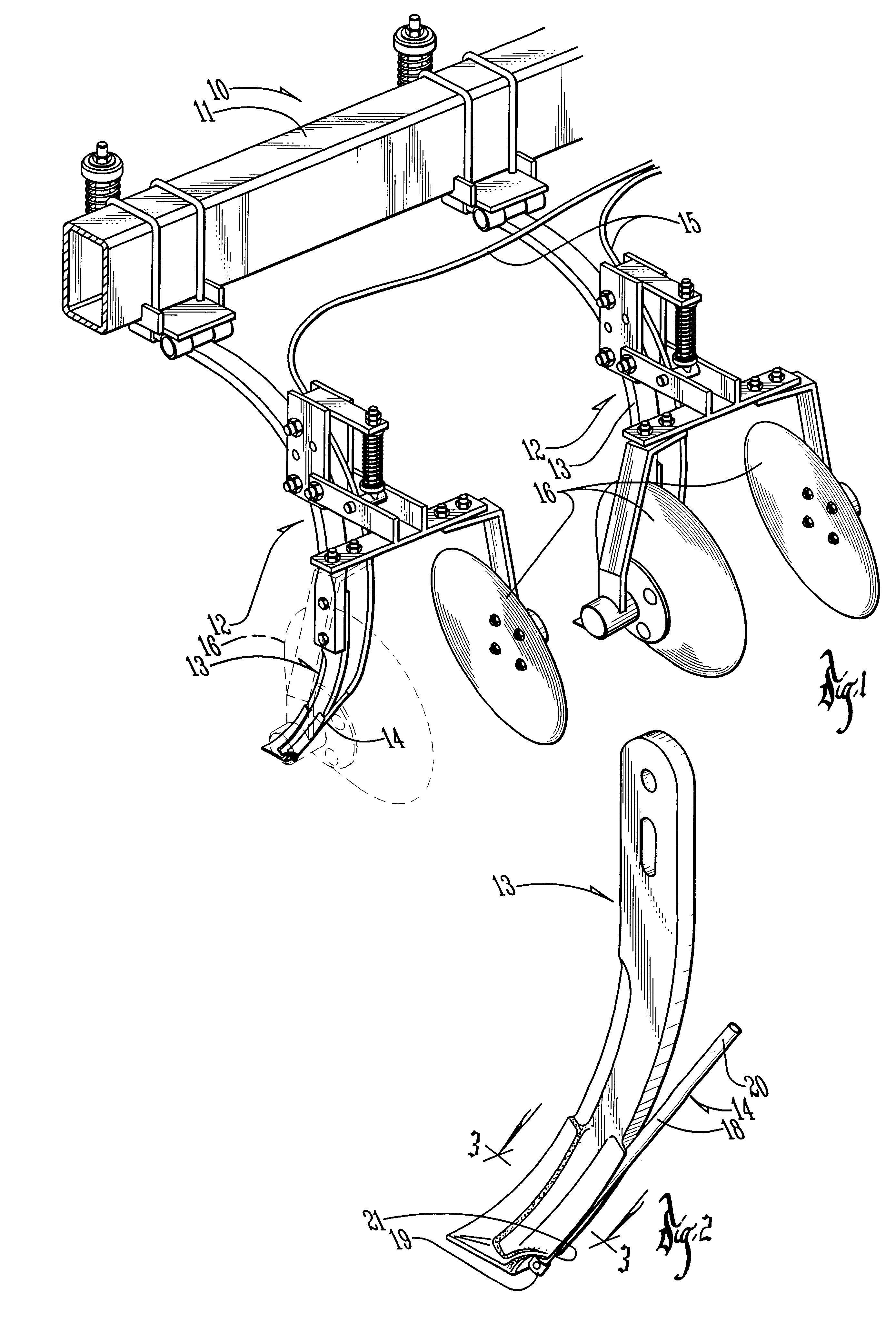Anhydrous ammonia application device
an ammonia application device and anhydrous ammonia technology, applied in the direction of direct liquid fertiliser delivery, liquid fertiliser distribution, agriculture, etc., can solve the problems of increasing the cost of production for farmers, increasing environmental risks from water run-off, and the shortcomings of the applicator are still large enough to be problematic for users
- Summary
- Abstract
- Description
- Claims
- Application Information
AI Technical Summary
Benefits of technology
Problems solved by technology
Method used
Image
Examples
Embodiment Construction
)
Shown by FIG. 1 is a portion of an apparatus 10 that represents a preferred embodiment of the present invention and is used to apply anhydrous ammonia to agricultural crop production land. The apparatus 10 includes a tool bar 11 and a plurality of injector assemblies 12. Each of the injector assemblies 12 includes generally a knife 13 and an injector 14 that is mounted on the rear of the knife 13, as best shown in FIGS. 2 and 4. As those skilled in the art will be aware, hoses 15 are attached to the injectors 14 to convey anhydrous ammonia from a manifold or other means of ammonia distribution to the injectors. The knives 13 are employed to break open the soil as the tool bar 11 travels over a field to permit the injection of the anhydrous ammonia therein. Each of the knives 13 is disposed between a pair of discs 16 that act to cover over with soil the applied ammonia.
Referring now to FIGS. 4 and 5, each of the injectors 14 is preferably of a straight construction and is formed of ...
PUM
 Login to View More
Login to View More Abstract
Description
Claims
Application Information
 Login to View More
Login to View More - R&D
- Intellectual Property
- Life Sciences
- Materials
- Tech Scout
- Unparalleled Data Quality
- Higher Quality Content
- 60% Fewer Hallucinations
Browse by: Latest US Patents, China's latest patents, Technical Efficacy Thesaurus, Application Domain, Technology Topic, Popular Technical Reports.
© 2025 PatSnap. All rights reserved.Legal|Privacy policy|Modern Slavery Act Transparency Statement|Sitemap|About US| Contact US: help@patsnap.com



